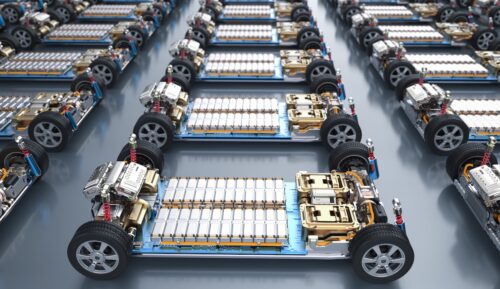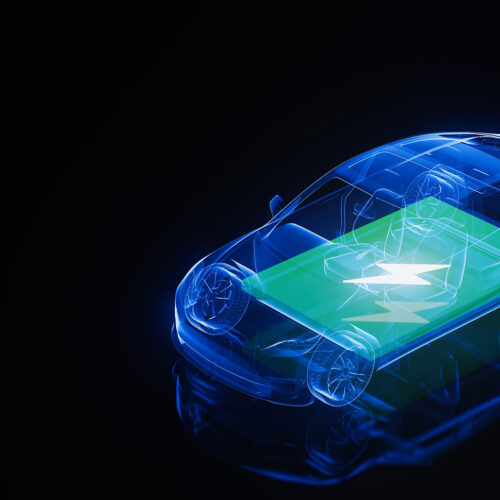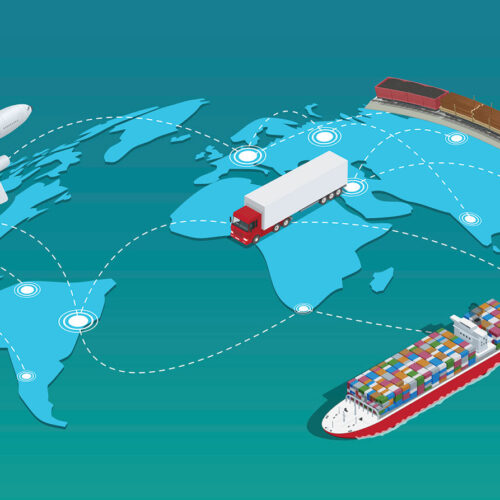3d rendering group of electric cars with pack of battery cells module on platform in a row

Clean Energy 101: EV Battery Recycling
An interview with Detroit-based Manager Alessandra Carreon about the benefits of a circular battery economy and what needs to happen to make it a reality.
This week, a select group of global innovators, business executives, scientists, policymakers, artists, activists, and others will convene at the TED Countdown Summit in Detroit, Michigan, to discuss what needs to be done to address climate change, and answer these questions: how much progress have we made? What do we need to do to protect future generations? What solutions, tools, and partnerships will help us move forward?
Alessandra Carreon, a manager on RMI’s Carbon-Free Transportation team, was invited to the summit, and has some answers to these questions, especially as they relate to the electric vehicle battery (EV) supply chain.
Drawing on more than a decade of experience in sustainability with a focus on the automotive industry, Carreon is working to advance a circular battery economy, one in which the life of batteries is thoughtfully extended or recycled. This can be done by extracting the materials to be used in another product, or reusing the battery again in an EV or for another energy storage application. Her work has garnered attention from others in the EV space, as an increasing number of people have come to view battery circularity as a powerful tool to reduce our reliance on raw materials and their related harms while strengthening the EV battery supply chain, making it more resilient to disruption from extreme weather and geopolitics.
I sat down with Carreon to learn more about the benefits of a circular battery economy and what needs to happen to make it a reality.
What’s wrong with today’s EV battery supply chain?
Alessandra Carreon: There are two major problems with the EV battery supply chain, both of which threaten to hinder or even stall EV adoption worldwide.
The first is the fact that the upstream portion of the supply chain, and by that I mean the extraction of the minerals that go into EV batteries globally, can rely on the forced labor of vulnerable people, including both children and adults. Also, current mining practices risk damaging local environments. For example, they can pollute communities’ water sources upon which agriculture, and by extension local economies, depend. Tailing dams, which store the byproducts of mines and can be toxic, even radioactive at times, can and have collapsed, killing people. The list goes on, but those are the main concerns: human rights abuses and environmental degradation.
Secondly, today’s EV battery supply chain has the curious distinction of being too geographically concentrated and too geographically dispersed. It’s too concentrated because mining, refining, processing, and assembly take place in just a few countries. If trade alliances change, if conflict breaks out, or if extreme weather damages operations in any of these countries, bottlenecks emerge and the whole supply chain is affected. On the other hand, the supply chain is too dispersed because in order to produce a battery, the minerals that go into it have to travel an average of 50,000 miles, which produces emissions and highlights the weaknesses of the global EV battery supply chain.
I’d also like to address a possible misconception, the belief that the United States’ EV battery supply chain should and can become completely independent. This independence is not only impossible, but also implies that any effort to improve the supply chain is a zero-sum game with winners and losers. The EV battery supply chain will always be global. What’s important is that many producing nations strengthen their supply chains, for the benefit of all. If they do, when the global supply chain is disrupted, there will be fail-safes, or plan Bs, to fill in the gaps.
How will a circular battery economy help address these challenges?
AC: It’s encouraging to see EV adoption growing. But many are understandably worried that the EV battery supply chain won’t be able to meet increased EV demand.
A circular battery economy can help us meet this growing demand. If we recycle and repurpose end-of-life (EOL) EV batteries, we avoid having to create a brand-new battery, thereby decreasing our reliance on raw materials and the unethical practices used to extract them. We also make the supply chain more resilient to disruption over which we have little to no control.
Another important consideration that often gets lost is the economic benefits of investing in a robust circular battery economy: investment in battery circularity will result in job growth, entrepreneurial opportunities, and the development of new technologies and by extension new industries. Investing in emerging businesses and entrepreneurs driving innovation also offers new pathways to support small- and medium-sized enterprises, as well as women- or other minority-owned businesses to foster an increasingly equitable and diverse economy.
What stands in the way of making a circular battery economy a reality?
AC: At the top of the list is a lack of infrastructure. Siting facilities to extract, refine, process, assemble, and ultimately, transport EOL EV batteries for a circular economy means we need to rethink the way we grow our regional economies. In the United States, we have a large gap in processing steps to build battery subcomponents domestically. To get these facilities up and running, we’ll need significantly more investment than that provided by legislation like the Bipartisan Infrastructure Law and the Inflation Reduction Act.
Another problem is the lack of aligned financial incentives. Depending on the battery chemistry and material content, recycling and reusing batteries can be more expensive than simply producing new ones, so the business case for battery circularity is linked to the type of battery in question. Also, the way batteries are designed can make them more or less difficult to recycle and reuse with consistency and efficiency. Policy can play a big part here to standardize expectations around recycling and battery design.
Data opacity is also an issue — we simply do not have the tools we need to track a battery’s production from start to finish. Without this information, our efforts to create a circular battery economy will be stymied.
What’s needed to create a circular battery economy?
AC: We will need new national and international policies that focus on improving supply chain traceability and data transparency. Policy will also need to regulate material transportation and storage, manufacturing, production, recycling, and reuse.
Policymakers will need the insights of automakers, original equipment manufacturers, advocates, activists, and subject matter experts (like those at RMI!) to make informed decisions. They’ll also need to balance long- and short-term goals; for instance, battery circularity efforts can’t get in the way of automakers’ need to get EVs on the road.
To provide useful, actionable insights to policymakers and investors, the wide array of EV battery stakeholders, all of whom have differing interests, will need to come together to identify supply chain challenges and opportunities, what technologies to prioritize, and how to position products to customers.
With this information, domestic and international decision makers will need to intensely collaborate to make sure that policy is cohesive and doesn’t work at cross purposes.
Our Battery Circular Economy Initiative focuses on making that first step, collaboration, happen. We’re bringing together the right people, including representatives from local communities, to have frank discussions about how to make battery circularity a reality. We’ll also be publishing a dashboard that people can use to view existing mineral supply and map material source and processing capacity so they can see projected demand, supply gaps, and environmental, and human rights risk metrics.
I’ll finish by saying that we’re at an inflection point. While there are relatively few EOL batteries today, in the coming years their number is projected to grow exponentially. It will take time to build the infrastructure we need, so we need to start moving quickly and aggressively.
We have two choices: we do nothing and end up with a weak, wasteful, and unethical EV battery supply chain that’s unable to meet EV demand, or we proactively prepare for the deluge of EOL batteries and enjoy the economic, social, and environmental benefits of battery circularity.

